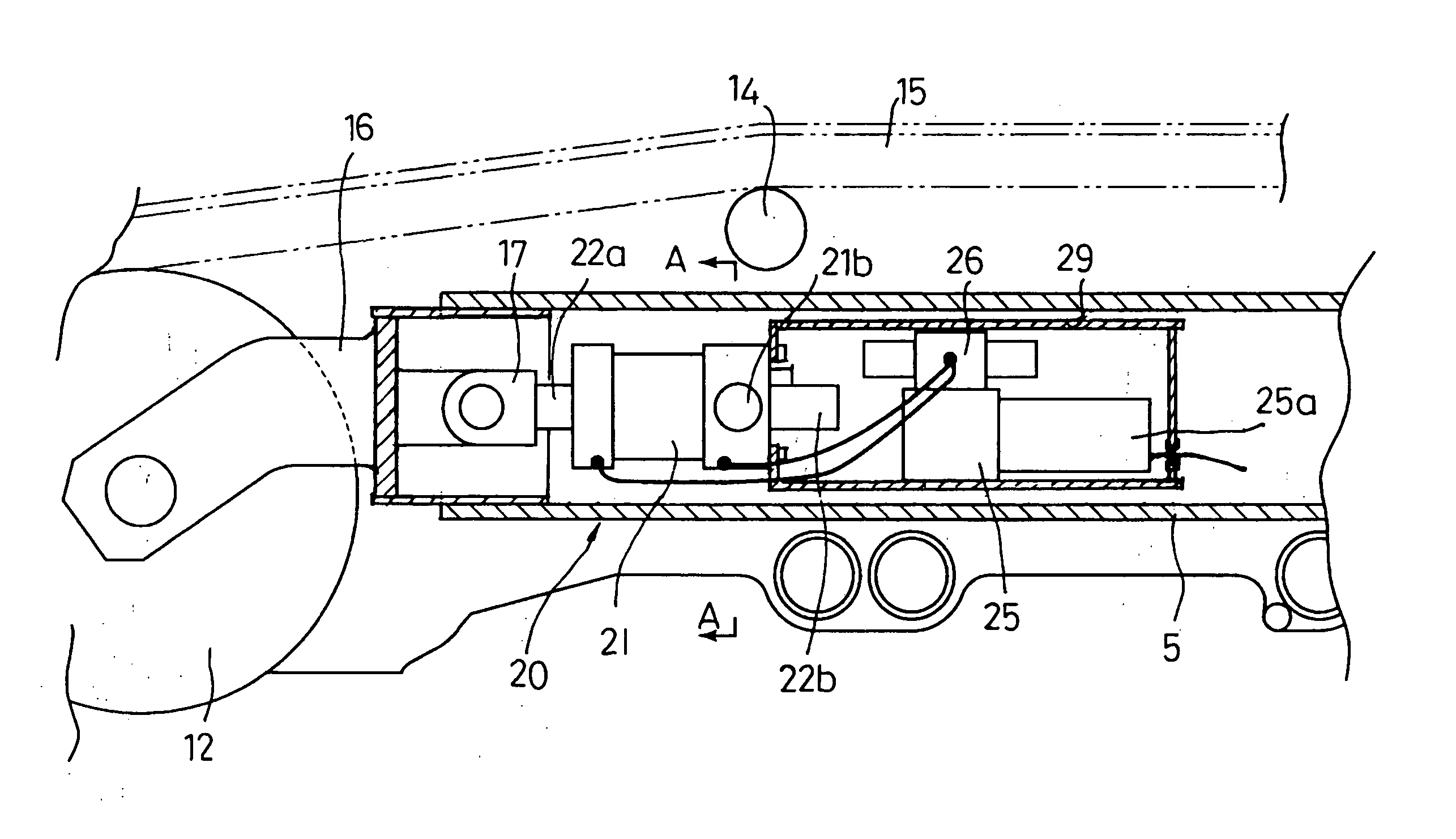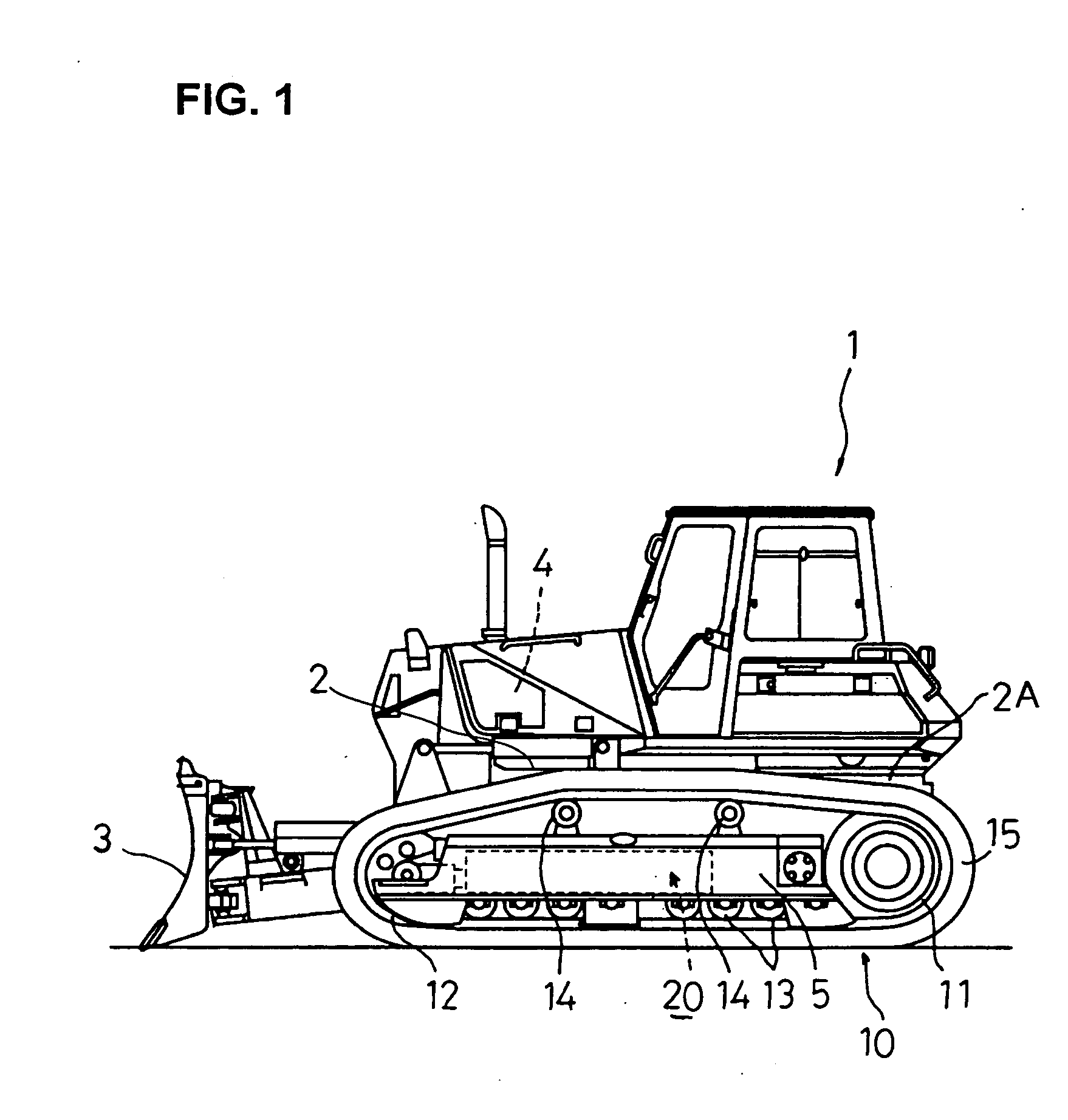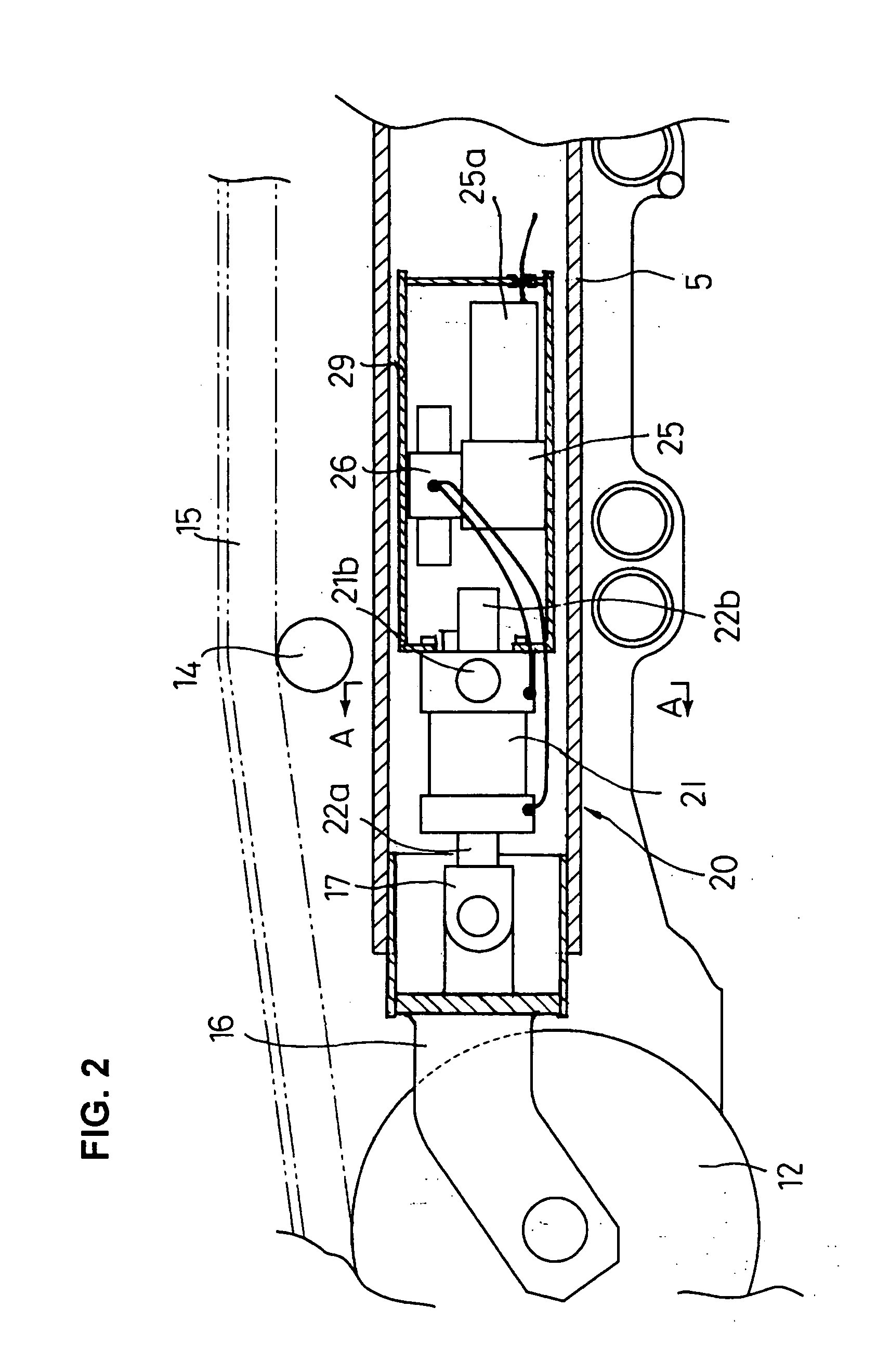Crawler track tension adjusting device
a technology of tension adjustment and track, which is applied in the direction of mechanical equipment, transportation and packaging, and manufacturing, etc., can solve the problems of increasing the load on the coil spring, reducing the efficiency associated with the operation of the work machine, and creating slack, so as to reduce the risk of oil leakage, facilitate machining, and increase the degree of freedom of the vehicle structur
- Summary
- Abstract
- Description
- Claims
- Application Information
AI Technical Summary
Benefits of technology
Problems solved by technology
Method used
Image
Examples
first embodiment
[0030] The first embodiment is associated with a track adjuster which is applied to a bulldozer 1 shown in FIG. 1, the bulldozer 1 serving as a track-type work machine for use in operations such as earth moving and ripping. The bulldozer 1 includes work implements such as a blade 3 and a ripper (not shown) which are operated by a hydraulic drive. In the bulldozer 1, an engine 4 is mounted on a vehicle body 2, for activating the blade 3 and the ripper and making the vehicle move. This bulldozer 1 has a crawler unit 10 on both sides of a main frame 2A.
[0031] Each crawler unit 10 has (i) a driving sprocket 11 located at the rear end of the main frame 2A, (ii) an idler 12 located at the front end, (iii) a plurality of track rollers 13 disposed in the lower part of the intermediate portion, (iv) track carrier rollers 14 disposed in the upper part of the intermediate portion, and (v) an endless crawler belt 15 wrapped around the driving sprocket 11 and the idler 12. The endless crawler be...
second embodiment
[0049] More specifically, the track adjuster 20A of the second embodiment is formed such that discharge ports 40, 41 of the hydraulic pump 25A are connected to an operating oil tank 44 through suction check valves 42, 43 respectively, and the discharge port 40 is connected to the front pressure chamber 23a of the tension adjusting cylinder 21 through the pipe line 28a whereas the discharge port 41 is connected to the rear pressure chamber 23b of the tension adjusting cylinder 21 through the pipe line 28b. In the middle of the pipe line 28b, a check valve 45 is interposed. Extending from the pipe line 28b between the check valve 45 and the rear pressure chamber 23b is a bypass pipe line 28d which is in turn connected to the tank 44. In the bypass pipe line 28d, a relief valve 32 is interposed. Another relief valve 46 is interposed in a pipe line extending from the pressure oil discharge side of the suction check valve 42 to the tank 44.
[0050] In the track adjuster 20A of the second e...
PUM
 Login to View More
Login to View More Abstract
Description
Claims
Application Information
 Login to View More
Login to View More - R&D
- Intellectual Property
- Life Sciences
- Materials
- Tech Scout
- Unparalleled Data Quality
- Higher Quality Content
- 60% Fewer Hallucinations
Browse by: Latest US Patents, China's latest patents, Technical Efficacy Thesaurus, Application Domain, Technology Topic, Popular Technical Reports.
© 2025 PatSnap. All rights reserved.Legal|Privacy policy|Modern Slavery Act Transparency Statement|Sitemap|About US| Contact US: help@patsnap.com



